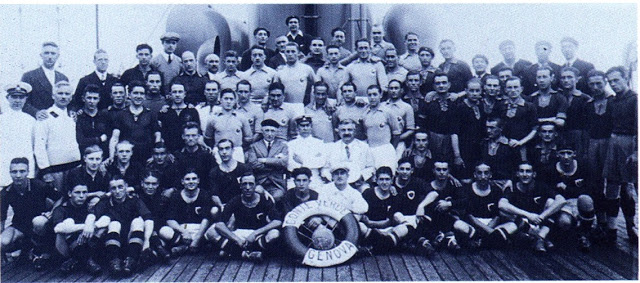In 1929, it was decided that the first Football World Cup would take place in Uruguay from 13th– 30th July 1930. The South American nation was handed over the responsibility due to their Olympic success in the 1920s. They were the clear favourite to win the tournament.
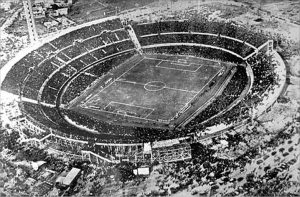
The European nations like Sweden, Spain, Italy and Holland were enthusiastic to host the inaugural edition, but became less interested when the opportunity was handed to a non-European country. Moreover, the prevailing economic depression in Europe also hindered some teams and players to leave their countries on a long trip.
In the end only four European nations agreed to send their teams to Uruguay but none were highly-ranked. Frenchman Jules Rimet, the man who introduced the concept of Football World Cup, convinced his home team to take part in the tournament. But their coach, Gaston Barreau and best striker, Manuel Anatol, opted not to participate. Likewise, Belgium participated because of the pestering of the Vice-President of FIFA, Rudolf Seedrayers, who was a Belgian himself. But their best player, Raymond Braine, had to give the tournament a miss due to his suspension for an unlikely offence. Romania, on the other hand, were forced to play by their enthusiastic new king, Carol II. The king himself picked the squad and promised the players that they would not lose their jobs during their absence. There were doubts about the participation of Yugoslavia at first because of the boycott of the Croatians. But the Belgrade Football Association formed a team comprising exclusively of the Serbian players to represent Yugoslavia in the World Cup.
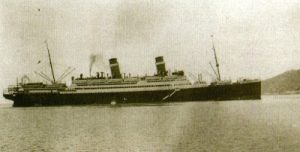
The trans-Atlantic trip, back then, were to be made by ships that were both time and money consuming. So the European nations decided to travel together to save money and also to overcome the boredom of the journey. The Conte Verde, that sailed out of the shipyards of William Beardmore & Co in Dalmuir, near Glasgow in April 1923, inscribed itself in the history book by becoming the official carrier of the European footballers for the first World Cup in 1930.
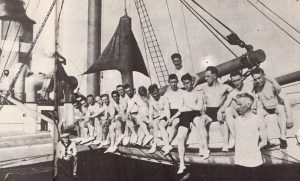
On 21st June 1930, Conte Verde, set its sail from Genoa with the Romanian national Football team on board. The Romanians already made a two-night train journey to reach Genoa. The then captain, Rudolph Wetzer noted “The seats were very bad – our bones were killing us – but it was worth it.”[Source: The Guardian]. In the next couple of days, Conte Verde reached Villefranche-sur-Mer, a village on the French Riviera. The picturesque harbour was the boarding point for the French team along with Jules Rimet who packed the World Cup trophy in his suitcase. They were accompanied by three designated European referees- Jean Langenus, Henri Christophe and Thomas Balway. Next the Belgian team was picked up from Barcelona after which the ship was on its voyage across the Atlantic Ocean.
Yugoslavia, were late in taking the decision and so missed the booking spot in Conte Verde. The team went on their own, taking the SS Florida from Marseille. They were supposed to be accompanied by Egypt but bad weather kept the African nation away from the tournament.
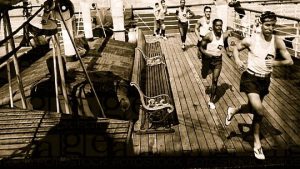
The Conte Verde stopped in Lisbon, Madeira and the Canary Islands before heading into the open ocean. The seven to eight days of oceanic journey from Europe to America was fun-filled for the players. France’s Lucien Laurent remembered the days on Conte Verde, “There was no talk of tactics or anything like that, no coaching. It was just running about the boat on the deck. Running, running all the time. Down below we would do exercise – stretching, jumping, running up stairs, lifting weights. There was also a swimming pool there, which we all used until the weather got cooler. And we would be entertained by a comedy act or a string quartet. It was like a holiday camp.” [Source: The Guardian]
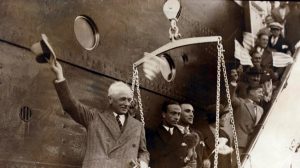
The ship crossed the Atlantic and reached Rio de Janerio where it finally picked up the Brazilian delegation. On 4 July, after 15 days at sea, Conte Verde reached Montevideo with four teams. Lucien Laurent further reminisced, “We didn’t really realise the full enormity of why we were going to Uruguay. Not until years later did we appreciate our place in history. It was just adventure. We were young men having fun. The journey on the Conte Verde took 15 days. It was 15 very happy days.” [Source: The Guardian]
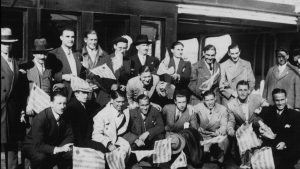
At Montevideo, the Romanians, French, Belgians and Brazilians were joined by the Yugoslavs as well as the Americans and Mexicans, who had travelled together. Mexico also had an eventful journey as they started going in the wrong direction but later rectified and sailed from Veracruz to Havana and then up to New York to join the Americans on the SS Munargo.

